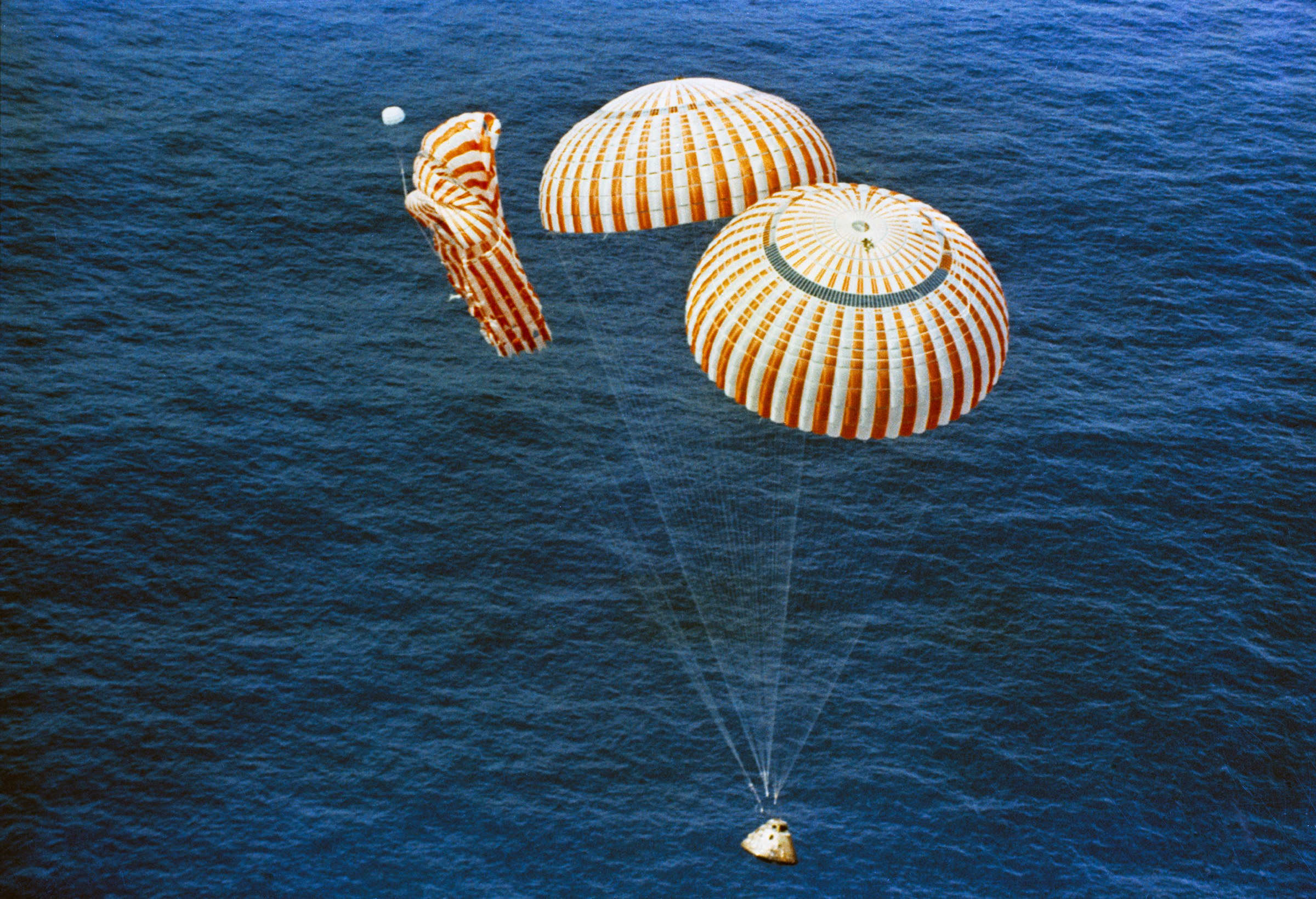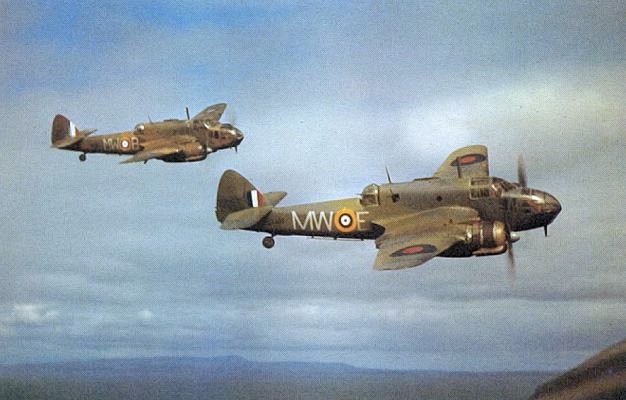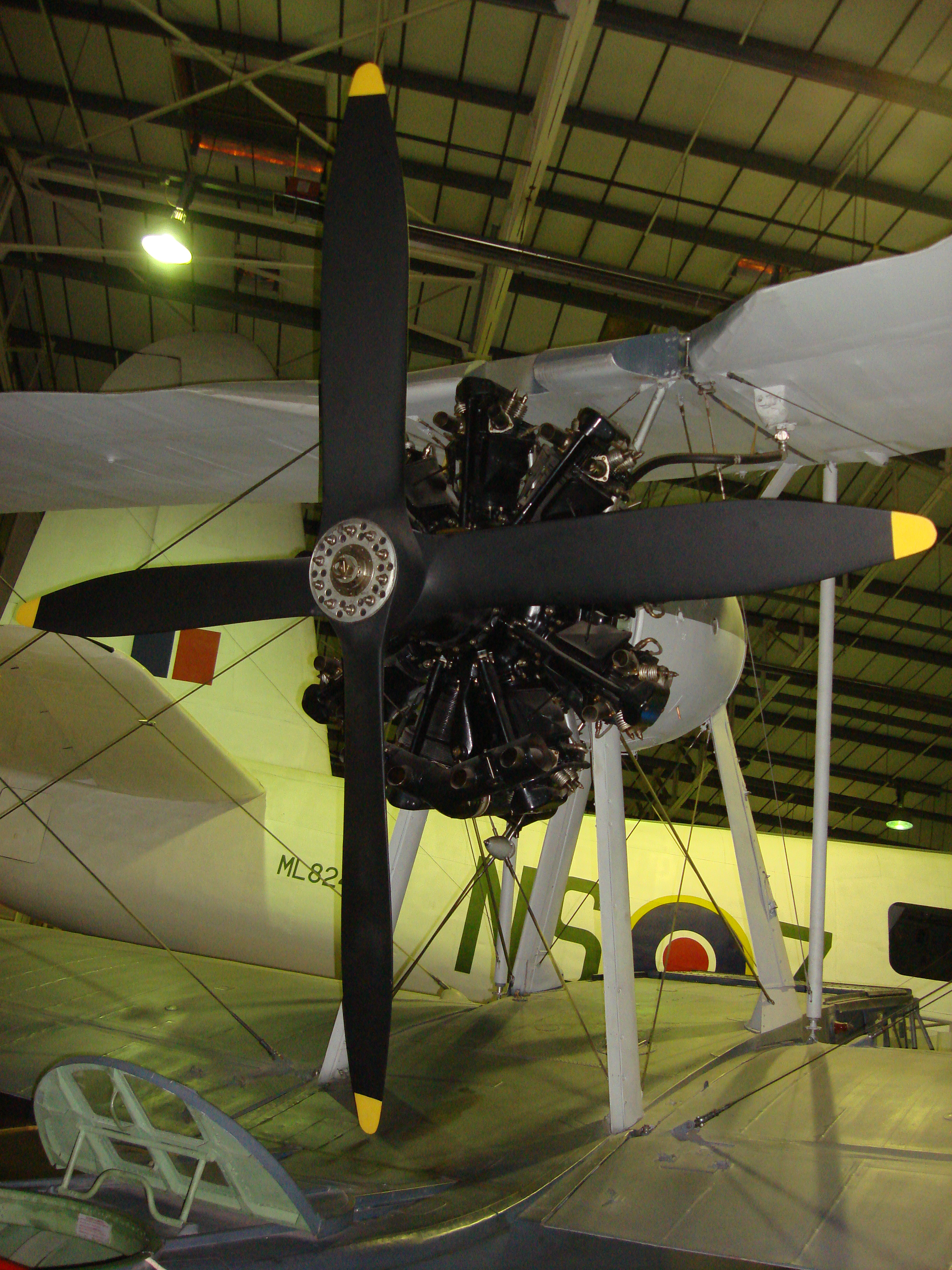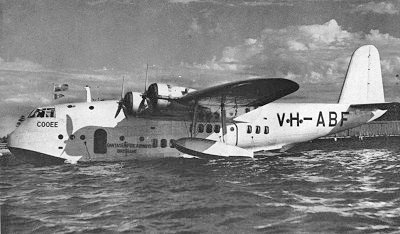|
Rescue And Communication Squadron RAAF
The Rescue and Communication Squadron (also No. 1 Rescue and Communication Squadron) was a Royal Australian Air Force (RAAF) squadron formed during World War II. Raised for service during the New Guinea campaign, the squadron existed between October 1942 and November 1943, and undertook a variety of support roles including search and rescue, transportation, reconnaissance and casualty evacuation. Upon disbandment, it was used to raise two new communications units. History Raised on 1 October 1942 at Port Moresby, the unit operated for around a year, serving in the New Guinea campaign. The unit was initially formed as a single flight, before being expanded to a full squadron in November 1942, under the command of Squadron Leader Jerry Pentland,RAAF Historical Section, ''Units of the Royal Australian Air Force'', p. 186 a World War I veteran, who was considered the oldest pilot in the RAAF at the time, but who had extensive experience operating in New Guinea. At this time it was ... [...More Info...] [...Related Items...] OR: [Wikipedia] [Google] [Baidu] |
RAAF Aircraft Goodenough Island (AWM Image P02875-154)
The Royal Australian Air Force (RAAF) is the principal aerial warfare force of Australia, a part of the Australian Defence Force (ADF) along with the Royal Australian Navy and the Australian Army. Constitutionally the governor-general of Australia is the de jure commander-in-chief of the Australian Defence Force. The Royal Australian Air Force is commanded by the Chief of Air Force (CAF), who is subordinate to the Chief of the Defence Force (CDF). The CAF is also directly responsible to the Minister for Defence, with the Department of Defence administering the ADF and the Air Force. Formed in March 1921, as the Australian Air Force, through the separation of the Australian Air Corps from the Army in January 1920, which in turn amalgamated the separate aerial services of both the Army and Navy. It directly continues the traditions of the Australian Flying Corps (AFC), the aviation corps of the Army that fought in the First World War and that was formed on 22 October 1912. ... [...More Info...] [...Related Items...] OR: [Wikipedia] [Google] [Baidu] |
De Havilland Fox Moth
The DH.83 Fox Moth is a small biplane passenger aircraft from the 1930s powered by a single de Havilland Gipsy Major I inline inverted engine, manufactured by the de Havilland Aircraft Company. The aircraft was designed late in 1931 as a low-cost, light passenger aircraft. Many components, including the engine, tailplane, fin, rudder, and wings were identical to those of the de Havilland DH.82 Tiger Moth, then being built in large quantities. These were fitted to a purpose-built fuselage, which had a plywood covering over longerons that were made of ash forward of the pilot and Sitka spruce aft. The pilot sat in a raised cockpit behind the small enclosed passenger cabin, which was usually fitted with three seats for short-range flights. The "Speed Model" was fitted with a canopy and fairing. The wings could also be folded for storage. Operational history The prototype first flew on 29 January 1932 and was sent to Canada, gaining sufficient interest that seven were assemb ... [...More Info...] [...Related Items...] OR: [Wikipedia] [Google] [Baidu] |
RAAF Squadrons
The Royal Australian Air Force (RAAF) is the principal Air force, aerial warfare force of Australia, a part of the Australian Defence Force (ADF) along with the Royal Australian Navy and the Australian Army. Constitutionally the Governor-General of Australia, governor-general of Australia is the de jure commander-in-chief of the Australian Defence Force. The Royal Australian Air Force is commanded by the Chief of Air Force (Australia), Chief of Air Force (CAF), who is subordinate to the Chief of the Defence Force (Australia), Chief of the Defence Force (CDF). The CAF is also directly responsible to the Minister for Defence (Australia), Minister for Defence, with the Department of Defence (Australia), Department of Defence administering the ADF and the Air Force. Formed in March 1921, as the Australian Air Force, through the separation of the Australian Air Corps from the Army in January 1920, which in turn amalgamated the separate aerial services of both the Army and Navy. It d ... [...More Info...] [...Related Items...] OR: [Wikipedia] [Google] [Baidu] |
Trove
Trove is an Australian online library database owned by the National Library of Australia in which it holds partnerships with source providers National and State Libraries Australia, an aggregator and service which includes full text documents, digital images, bibliographic and holdings data of items which are not available digitally, and a free faceted-search engine as a discovery tool. Content The database includes archives, images, newspapers, official documents, archived websites, manuscripts and other types of data. it is one of the most well-respected and accessed GLAM services in Australia, with over 70,000 daily users. Based on antecedents dating back to 1996, the first version of Trove was released for public use in late 2009. It includes content from libraries, museums, archives, repositories and other organisations with a focus on Australia. It allows searching of catalogue entries of books in Australian libraries (some fully available online), academic and ... [...More Info...] [...Related Items...] OR: [Wikipedia] [Google] [Baidu] |
Martin B-26 Marauder
The Martin B-26 Marauder is an American twin-engined medium bomber that saw extensive service during World War II. The B-26 was built at two locations: Baltimore, Maryland, and Omaha, Nebraska, by the Glenn L. Martin Company. First used in the Pacific Theater of World War II in early 1942, it was also used in the Mediterranean Theater and in Western Europe. After entering service with the United States Army aviation units, the aircraft quickly received the reputation of a " widowmaker" due to the early models' high accident rate during takeoffs and landings. This was because the Marauder had to be flown at precise airspeeds, particularly on final runway approach or when one engine was out. The unusually high 150 mph (241 km/h) speed on short final runway approach was intimidating to many pilots who were used to much slower approach speeds, and when they slowed to speeds below those stipulated in the manual, the aircraft would often stall and crash.Ethell 1995, p. ... [...More Info...] [...Related Items...] OR: [Wikipedia] [Google] [Baidu] |
Water Landing
In aviation, a water landing is, in the broadest sense, an aircraft landing on a body of water. Seaplanes, such as floatplanes and flying boats, land on water as a normal operation. Ditching is a controlled emergency landing on the water surface in an aircraft not designed for the purpose, and it is a very rare occurrence. Controlled flight into the surface and uncontrolled flight ending in a body of water (including a runway excursion into water) are generally not considered water landings or ditching, but are considered accidents. Most times, ditching results in aircraft structural failure. Aircraft water landings By design Seaplanes, flying boats, and amphibious aircraft are designed to take off and alight on water. Alighting can be supported by a hull-shaped fuselage and/or pontoons. The availability of a long effective runway was historically important on lifting size restrictions on aircraft, and their freedom from constructed strips remains useful for transportat ... [...More Info...] [...Related Items...] OR: [Wikipedia] [Google] [Baidu] |
Bristol Beaufighter
The Bristol Type 156 Beaufighter (often called the Beau) is a British multi-role aircraft developed during the Second World War by the Bristol Aeroplane Company. It was originally conceived as a heavy fighter variant of the Bristol Beaufort torpedo bomber. The Beaufighter proved to be an effective night fighter, which came into service with the Royal Air Force (RAF) during the Battle of Britain, its large size allowing it to carry heavy armament and early aircraft interception radar without major performance penalties. The Beaufighter was used in many roles; receiving the nicknames ''Rockbeau'' for its use as a rocket-armed ground attack aircraft and ''Torbeau'' as a torpedo bomber against Axis shipping, in which it replaced the Beaufort. In later operations, it served mainly as a maritime strike/ground attack aircraft, RAF Coastal Command having operated the largest number of Beaufighters amongst all other commands at one point. The Royal Australian Air Force (RAAF) al ... [...More Info...] [...Related Items...] OR: [Wikipedia] [Google] [Baidu] |
Consolidated PBY Catalina
The Consolidated Model 28, more commonly known as the PBY Catalina (U.S. Navy designation), is a flying boat and amphibious aircraft designed by Consolidated Aircraft in the 1930s and 1940s. In U.S. Army service, it was designated as the OA-10 and in Canadian service as the Canso, and it later received the NATO reporting name Mop. It was one of the most widely used seaplanes of World War II. Catalinas served with every branch of the United States Armed Forces and in the air forces and navies of many other nations. The last military PBYs served until the 1980s. As of 2021, 86 years after its first flight, the aircraft continues to fly as a Aerial firefighting#Water bombers, waterbomber (or airtanker) in aerial firefighting operations in some parts of the world. Design and development Background The PBY was originally designed to be a Maritime patrol aircraft, patrol bomber, an aircraft with a long operational Range (aeronautics), range intended to locate and attack enemy ... [...More Info...] [...Related Items...] OR: [Wikipedia] [Google] [Baidu] |
Dornier Do 24
The Dornier Do 24 is a 1930s German three-engine flying boat designed by the Dornier Flugzeugwerke for maritime patrol and search and rescue. A total of 279 were built among several factories from 1937 to 1945. Design and development The Dornier Do 24 was designed to meet a Royal Netherlands Navy requirement for a replacement of the Dornier Do J, Dornier Wals being used by its Netherlands Naval Aviation Service, Naval Aviation Service in the Dutch East Indies, with the Netherlands government signing a contract for six Dornier Do 24s on 3 August 1936. Two more prototypes were built for the German navy to be evaluated against the Blohm & Voss BV 138.Green and Swanborough ''Air Enthusiast'' April–July 1983, pp. 9–10. The Do 24 was an all-metal Parasol wing, parasol monoplane with a broad-beamed Hull (watercraft), hull and stabilising sponsons. Twin tails were mounted on the upswept rear of the hull, while three wing-mounted tractor configuration engines powered the aircraft. F ... [...More Info...] [...Related Items...] OR: [Wikipedia] [Google] [Baidu] |
Supermarine Walrus
The Supermarine Walrus is a British single-engine Amphibious aircraft, amphibious biplane designed by Supermarine's R. J. Mitchell. Primarily used as a maritime patrol aircraft, it was the first British Squadron (aviation), squadron-service aircraft to incorporate an Landing gear, undercarriage that was fully retractable, crew accommodation that was enclosed, and a fuselage completely made of metal. Supermarine originally named the type the Supermarine Seagull V, before changing it to the ''Walrus''. The type first flew in 1933, its design process had begun four years earlier as a private venture. It shared its general arrangement with that of the earlier Supermarine Seagull (1921), Supermarine Seagull. Having been designed to serve as a Surveillance aircraft, fleet spotter launched by aircraft catapult, catapult from cruisers or battleships, the aircraft was employed as a maritime patrol aircraft. Early aircraft had a metal hull for greater longevity in Tropics, tropical condi ... [...More Info...] [...Related Items...] OR: [Wikipedia] [Google] [Baidu] |
Flying Boat
A flying boat is a type of seaplane with a hull, allowing it to land on water. It differs from a floatplane in having a fuselage that is purpose-designed for flotation, while floatplanes rely on fuselage-mounted floats for buoyancy. Though a flying boat’s fuselage provides buoyancy, it may also utilize under-wing floats or wing-like hull projections (called sponsons) for additional stability. Ascending into common use during the First World War, flying boats rapidly grew in both scale and capability during the interwar period, during which time numerous operators found commercial success with the type. Flying boats were some of the largest aircraft of the first half of the 20th century, exceeded in size only by bombers developed during the Second World War. Their advantage lay in using water instead of expensive land-based runways, making them the basis for international airlines in the interwar period. They were also commonly used as maritime patrol aircraft and air-s ... [...More Info...] [...Related Items...] OR: [Wikipedia] [Google] [Baidu] |
Avro Anson
The Avro Anson is a British twin-engine, multi-role aircraft built by the aircraft manufacturer Avro. Large numbers of the type served in a variety of roles for the Royal Air Force (RAF), Fleet Air Arm (FAA), Royal Canadian Air Force (RCAF), Royal Australian Air Force and numerous other air forces before, during, and after the Second World War. Initially known as the ''Avro 652A'', the Anson was developed during the mid-1930s from the earlier Avro 652 airliner in response to a request for tenders issued by the British Air Ministry for a coastal maritime reconnaissance aircraft. Having suitably impressed the Ministry, a single prototype was ordered, which conducted its maiden flight on 24 March 1935. Following an evaluation in which the Type 652A bettered the competing de Havilland DH.89, it was selected as the winner, leading to Air Ministry Specification 18/35 being written around the type and an initial order for 174 aircraft being ordered in July 1935. The Type 652A was ... [...More Info...] [...Related Items...] OR: [Wikipedia] [Google] [Baidu] |








